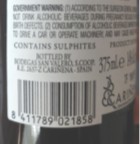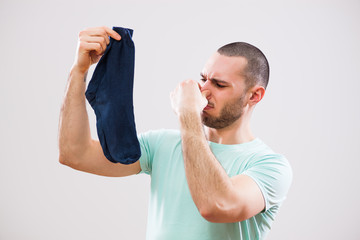Sulphur or sulfur… that is the question
The British spelling of this element is sulphur and so its derivatives are sulphite, sulphate etc. The International Union of Pure and Applied Chemistry (IUPAC) recommends the use of sulfur. Hence, its derivatives are sulfite, sulfate etc. Therefore, in this article I will stick to ‘f’ instead of ‘ph’.
Sulfur, the element, is a yellow, brittle, solid substance at room temperature that was known in ancient India. In combination with hydrogen and oxygen, it forms sulfuric acid that is used in so many industrial and household processes. Sulfite (SO32-), the ionized form of sulfur dioxide (SO2), is created in solution that is measured by analytical chemists to determine the amount of sulfur in a substance. When you see a wine label that states, “contains sulfites” it is accounting for free sulfur dioxide, sulfurous acid, bisulfite and sulfite ions and some forms of sulfur complexes.
How are these sulfites generated? Chemically, they are generated via the following reactions:

Why is it used?
Winemakers use sulfur dioxide as a preservative to prevent the oxidation of wine and maintains its freshness. The enzymes that oxidizes the juice resulting in its browning and modification of aromas and flavors are inactivated by sulfur dioxide. Since the 18th century, the best chateaux of Bordeaux have been using sulfur to sterilize their barrels. The amounts depend entirely on the winemaker. Some use a lot, to minimize the chances of yeast (Brett) or bacterial contamination. Some winemakers use bare minimum as they think the best flavors of wine are preserved with minimum intervention during the wine making process. Sulfur, mixed with lime and water is used in the vineyards against powdery mildew, a fungal disease.
Are sulfites harmful?
Consumption of sulfites are generally harmless, unless you are suffering from asthma. In fact, many common food items have higher sulfur levels than you find normally in a bottle of wine. For example, broccoli, brussels sprouts, cabbage, cauliflower, asparagus, bokchoy, green beans, tofu, lentils etc. I know!! It is a list of your favorite food items. According to FDA (Food and Drug Administration), less than 1% of the US population is sulfur sensitive. So, most of us do not have to worry about how much sulfur we are consuming on a daily basis.
However, excess of anything is not good. Same with free sulfur dioxide in wines. Excess of free sulfur dioxide is perceived as an unpleasant pungent odor similar to that of a burnt matchstick and sulfur-containing compounds (thiols) give an aroma of cooked egg-like smell.
How much sulfite is allowed in wines?
Lower the pH of the wine, less of sulfur dioxide is required to preserve the wine. By early 2000s, most countries made it mandatory to put “contains sulfites” on the wine labels if it was greater than 10 mg/L. Free sulfur dioxide as low as 30 mg/L can alter the aroma and taste of a white wine. However, laws within EU are stricter and different. The maximum permitted levels vary depending on the type of wine.
| Type of wine | Max. permitted levels of SO2 (mg/L) |
| Dry red wines | 150 |
| Dry white wines, dry rosé, and sweet red wines | 200 |
| Sparkling wines | 235 |
| Sweet white and rosé wines | 250 |
The maximum levels permitted in Australia is 250 mg/L (except for very sweet wines) whereas in USA it is 350 mg/L in all types of wines.
However, for organic wines the permitted levels are much lower. For example, in EU, it is 100 mg/L for dry reds and 150 mg/L for whites and rosé. Natural wines made without any addition of sulfur dioxide are prone to oxidation and varying degrees of off-flavors generated by wild yeast and bacteria.


As seen above, different producers place the label “contains sulfites” differently. Though, most often than not, it is written on the back of the bottle.
Myths about sulfites and wines
Myth # 1: Sulfites in wine cause Headaches
There is no definitive medical research that shows sulfites in wines cause headaches. Other candidates are tannins, histamines and of course, alcohol (that causes dehydration and hence the headache!)
Myth # 2: Red wine has higher sulfites and hence cause headaches
If you look at the numbers above, red wines have the lowest of sulfites compared to white wines or dessert wines. It has tannins that act as preservatives. Hence, less sulfites are needed.
Myth # 3: You should not drink wine as it contains sulfites, period!
Again, I have listed above some of the food and fruits that contain much more sulfites than a bottle of wine does. So, if you are not allergic to any of those, then there is no reason for you to stop drinking wine because of sulfites. In fact, dried fruits have 10 times more sulfites than wine.
Myth # 4: Organic or bio-dynamic wines are sulfite free
In order to be certified organic, there cannot be any added sulfites. However, sulfites are produced naturally during the fermentation process and the levels can reach anywhere between 10 – 40 mg/L. In addition, organic grapes are NOT the same as organic wines. If you do get a label stating that the wine is made without sulfites, then drink the wine soon as its shelf life will be very less.
References:
- Myths about Sulfites and Wine by Monica Reinagel; ‘Scientific American’; 2017
- The Oxford Companion to Wine, 4th ed. Edited by Jancis Robinson; 2015
- The Truth about Sulfites in Wine & the Myths of Red Wine Headaches by Mary Gorman-Mcadams; ‘thekitchen.com’; 2009
- “No added sulfur wine: Five to try”; Decanter, March 16, 2016.


Very good https://is.gd/tpjNyL
Awesome https://is.gd/tpjNyL
Awesome https://shorturl.at/2breu
Awesome https://shorturl.at/2breu
Awesome https://lc.cx/xjXBQT
Very good https://lc.cx/xjXBQT
Very good https://lc.cx/xjXBQT
Very good https://lc.cx/xjXBQT
Very good https://t.ly/tndaA
Awesome https://t.ly/tndaA
Good https://t.ly/tndaA